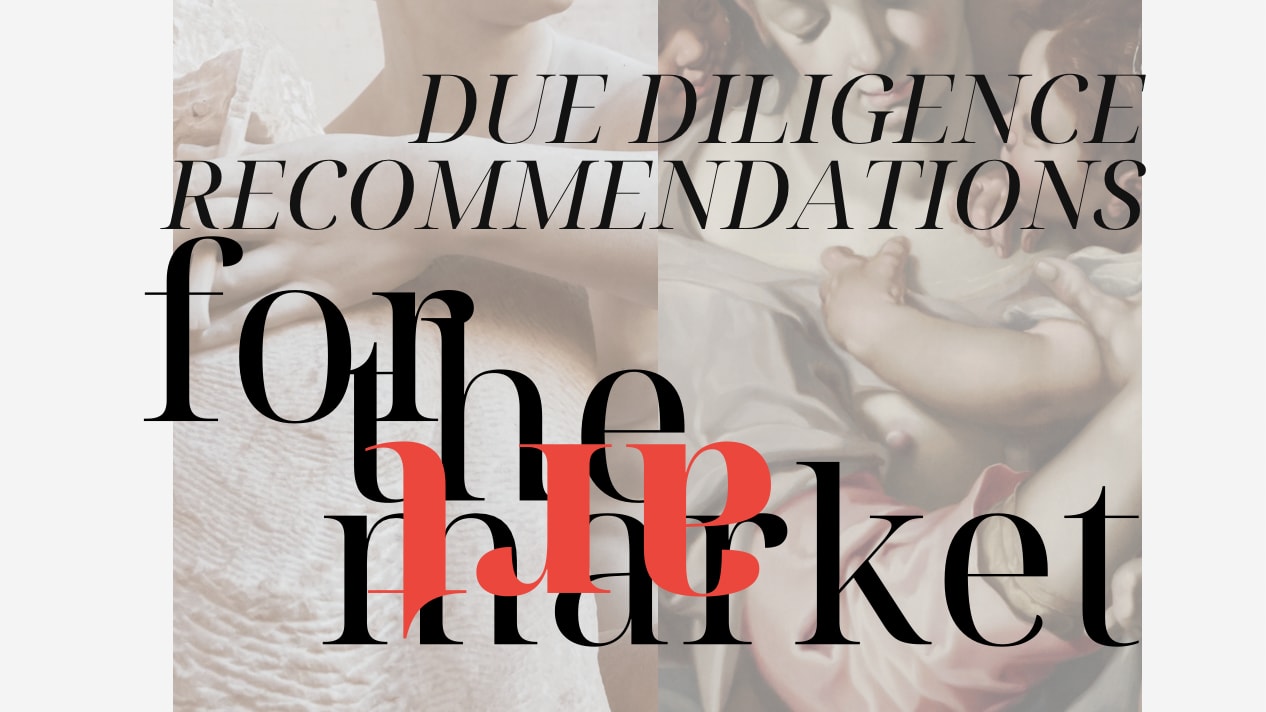Take the survey!
This suvery offers some suggestions for much needed reform and renewed due diligence standards in the Art World. It only takes a few minutes to complete and allows you to add your own suggestions.

When anti-money laundering checks are carried out today, as a routine part of a transaction, neither of the two or more parties involved are required to disclose their identity to each other. Checks into the source of funds are carried out independently by a qualified third party or financial institution. While the process of researching the ownership history of a work of art is more complicated and time consuming than carrying out routine AML checks, there are ways of simplifying and standardising the process, by focusing on identifying and addressing risk. Having access to the names of historical buyers and sellers allows researchers to check for red flag names, conduct more thorough database checks and make better recommendations. This can be applied either as an individual one-to-one agreement with professional researchers whose professional indemnity insurance would allow them to take the risk, or by setting up independent third party agency of researchers to perform the task.
It would be beneficial if auction houses and galleries were to list, where available, the last known owner of the work prior to WWII as well as the first known post-war owner. This measure may not resolve all possible areas of risk that can arise as far as different periods and mediums are concerned, but it would help address one of the key due diligence issues in the market.
Whenever the provenance is not supported by the necessary documentation, any oral accounts of stories/narratives need to be notarised for added accountability. The intentional distortion of the facts and a proven intent to deceive should be treated with the same gravity, akin to having given ‘false evidence’.
There seems to be a recently adopted auction trend by which images of artworks are listed in the lot information before the accompanying factsheet information appears (provenance/bibliography/exhibition history). Where there is little to no information on a lot beyond the image, this makes it harder when consulting future buyers prior to them making a purchase. Perhaps the purpose of this practice is to avoid listing any information until it has been confirmed, rather than simply to make it harder for the public to scrutinise the information listed. In any event, it has caused some frustration among the wider art historical and research community and is regarded as a retrograde move.
It would be a significant step forward if the auction houses would consider employing a varied network of provenance researchers, art historians, historians, and curators on a sale-by-sale basis. This would add a further layer of fortification to internal due diligence checks. For example, when preparing for a sale of Latin American art, having on file a list of researchers and scholars working on various periods and mediums of that market sector would add greater depth to the research and offer more assurance to buyers.
Adding independent consultants to the internal vetting process and the ALR checks would improve the reliability of the due diligence process. As a result, every single lot of every single sale would effectively be 'tripple checked'.
While there is always an assumption of anonymity when selling at auction (unless the publicised ownership can help the sale perform better) nowhere in the consignment agreement is it stated in black and white whether or not someone in the transaction wishes to remain anonymous. However, it could be made as simple as ticking a box:
- I wish to remain anonymous.
It is also important to give some power back to the vendor when it comes to the decision as to whether or not to respond, privately, to any provenance-related questions. It is a fair assumption that most consignors would opt out of this, but at the very least it would make clear that the nature of the questions being asked today have changed.
-
I am open to being contacted with questions about this consignment in the future.
Every piece of relevant accompanying provenance, exhibition and bibliographical information must be accompanied by the relevant supporting documentation as well as time-stamped results from database checks. Missing parts of the documentation should be clearly pointed out and all research reports should be signed by the author and be accompanied by their credentials and contact information.
Your feedback is much appreciated.